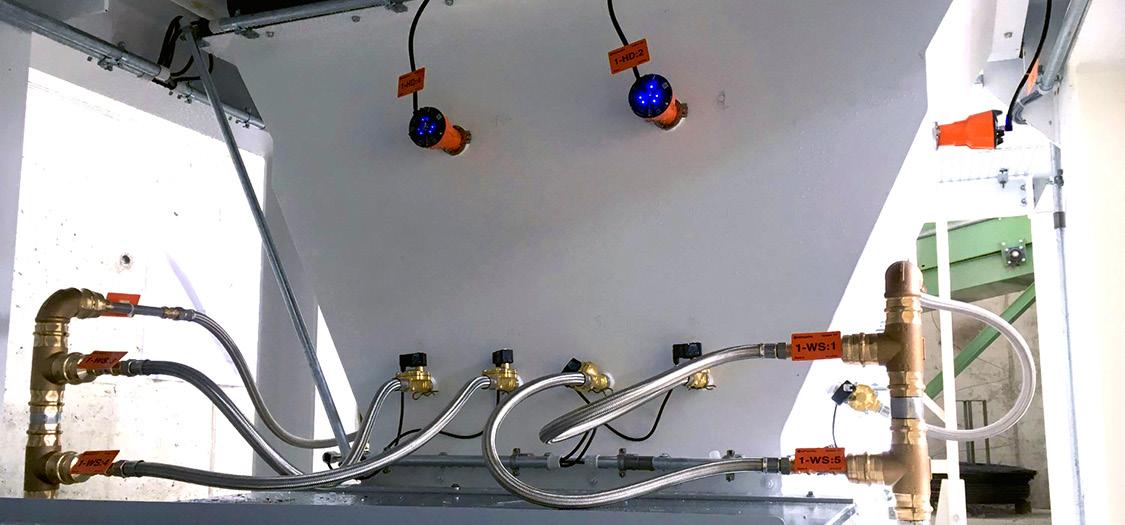« Dust Control
IMAGE 1
IMAGE 2
Example 1: Engineered transfer points and modular load zones: covered storage and transfer of wood pellets.
IMAGE 4
IMAGE 3
Example 2: Slider beds can act as a heat source. Coupled with spillage and dust due to uneven wear and sliding friction, the risk of fire and explosion is elevated.
Controlling Combustible Dust and Spillage
O
ne of the primary issues at pellet mill facilities is controlling combustible dust and spillage. Personnel safety and regulatory compliance are also top of mind in the corporate safety culture. Increasingly, maintenance and operations personnel are making use of new tools and leading-edge technologies to ensure that their jobs can be performed efficiently and safely. As a general statement, if maintenance is made easy to perform with minimal downtime, the corporate goals of maximum production can mesh perfectly with maintenance and operations goals to maximize reliability and minimize downtime.
BY GREG BIERIE Using a “toolbox” approach to total dust management and spillage control allows the pellet mill industry to address the problems at the source. This philosophy focuses on using safety by design in developing new technologies that are conceived by plant professionals, for use by plant professionals. If maintenance is easy to perform, it will get done. If problems are addressed at the source, the Band-Aid approach can be eliminated. The problems and solutions that combine “safety by design” with robust products and systems to achieve compliance and improve performance include the following areas of focus:
age
• Lower risk, increase safety, prevent spill-
• Reduce cleanup and transfer cost, improve material flow • Regulatory compliance with agencies, NGOs and local community Project Examples The following few examples of recent projects that address above issues. In Example 1, improvements were made to alleviate issues with transfer points and modular load zones at a wood pellet transfer and storage facility. As can be seen in Image 1 and Image 2, a dramatic difference was achieved. No additional dust con-
CONTRIBUTION: The claims and statements made in this article belong exclusively to the author(s) and do not necessarily reflect the views of Pellet Mill Magazine or its advertisers. All questions pertaining to this article should be directed to the author(s).
22 PELLET MILL MAGAZINE | ISSUE 2 2021


